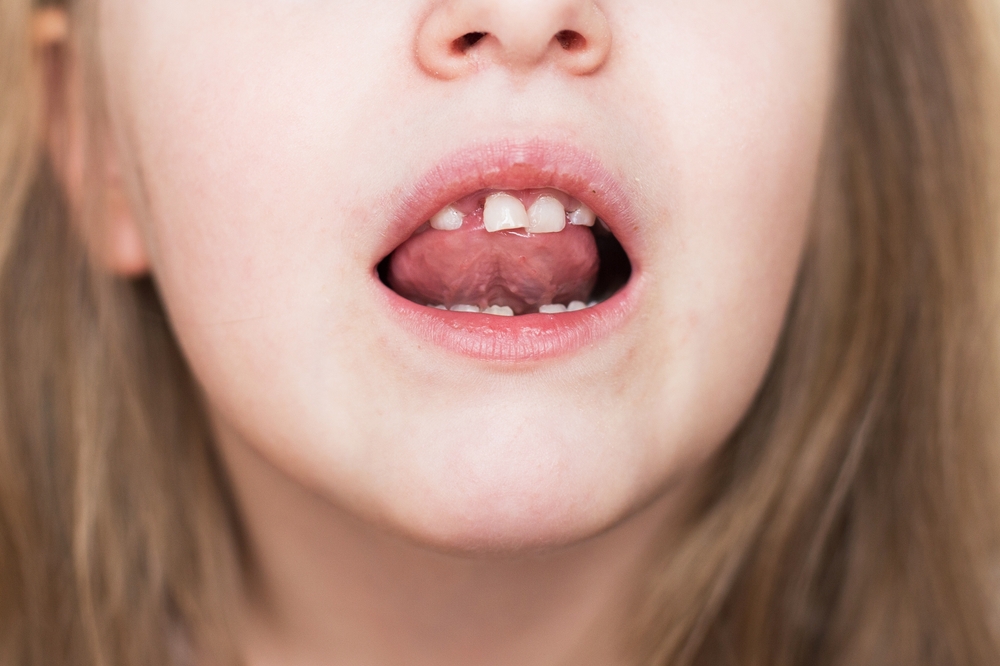
How Do You Treat Tongue Thrusting in Children?
Tongue Thrusting in Children
Tongue thrusting happens when a child pushes their tongue against or between the front teeth while swallowing, speaking, or even at rest. This habit affects how the teeth grow and line up over time, especially if it continues during the years when adult teeth are developing. Tongue thrusting is more common than you might think and often starts at an early age without parents noticing.
The cause of tongue thrusting often ties back to early habits like thumb sucking, extended bottle feeding, or prolonged pacifier use. These behaviours can shape how the mouth and tongue work together and may encourage the tongue to move in ways that aren’t helpful for proper speech or tooth alignment. Sometimes, a child may also have a naturally large tongue or struggle with nasal breathing, which can affect how they use their mouth and tongue.
Left untreated, tongue thrusting can lead to dental problems and speech issues. Children who tongue thrust may develop an open bite or other bite problems that require braces later. The habit can also interfere with how certain sounds are formed, especially “s” and “z” sounds. Some kids get frustrated when they can’t speak clearly, which may lower their confidence at school or with friends.
How Can You Tell If Your Child is Tongue Thrusting?
You can often spot tongue thrusting by watching your child swallow or speak closely. If their tongue moves forward between the teeth or presses against the front teeth, especially during swallowing, that’s a strong sign. Another clue is if your child often keeps their mouth slightly open or breathes through their mouth instead of their nose.
Speech delays or problems with certain sounds might also point to a tongue thrust habit. Children who struggle to pronounce words that include “s,” “sh,” or “ch” sounds may be using their tongue in ways that aren’t helpful. Teachers or speech therapists often pick up on this first, so if you’ve had feedback from school, it’s worth paying attention.
Dental checkups sometimes reveal signs of tongue thrusting even before you notice anything at home. If your dentist sees teeth pushed forward or an open bite, they may ask about your child’s tongue habits. Tongue thrust isn’t always easy to catch early, but the sooner it’s addressed, the better the outcome.
What Are Problems Caused by Tongue Thrusting?
Tongue thrusting can slowly change how your child’s teeth and mouth develop. If the habit continues without treatment, it can affect more than just their bite—it may change how they speak, smile, and even how they feel about themselves. While tongue thrusting might seem like a small issue at first, the long-term effects often need orthodontic care and, in some cases, speech therapy.
The pressure from the tongue can push teeth out of place, especially the front ones. This shift in tooth position often leads to changes in how the upper and lower teeth fit together. As your child grows, this can affect their ability to bite, chew, and speak clearly. The more their bite changes, the more likely they are to need braces or other orthodontic treatment later.
Alongside dental changes, many kids feel self-conscious when their teeth look different from their peers or when they struggle to pronounce words. Fixing these problems early can help avoid longer, more complex treatment in the future.
Here are some of the most common problems caused by tongue thrusting:
- Overbite – The top front teeth are pushed forward, creating a gap between the upper and lower teeth when the mouth is closed.
- Tooth Misalignment – Teeth may shift out of their normal position, leading to crowding or spacing problems.
- Speech Difficulties – Children may have trouble pronouncing sounds like “s” or “z,” often resulting in a lisp.
- Need for More Involved Orthodontic Treatment – Bite problems caused by tongue thrusting may require braces or other appliances for a longer period.
- Aesthetic and Self-Esteem Concerns – Misaligned teeth or speech issues can make children feel embarrassed or anxious about their appearance or how they sound.
You can also read our full guide on
Problems Caused by Tongue Thrusting and How To Treat Them
How Can You Treat Tongue Thrusting in Children?
Treating tongue thrusting early can help your child avoid long-term dental and speech issues. The approach usually depends on your child’s age, the severity of the habit, and whether other issues—like speech difficulties—are also present. In most cases, treatment starts with simple changes at home. If the habit continues or the tongue thrust has already affected the teeth, your dentist or orthodontist may suggest using a habit breaking appliance.
At-home strategies and appliances can work together or on their own, depending on your child’s needs. Your dental provider may also work with a speech therapist or myofunctional therapist to improve tongue placement during swallowing and speech. A full plan often includes daily practice, regular checkups, and steady encouragement from you.
At Home
Home-based treatment can be effective for younger children or those with a mild tongue thrust habit.
You can start by making your child aware of how their tongue should rest in the mouth—ideally against the roof of the mouth, not pushing on the teeth. Simple reminders, gentle corrections, and positive reinforcement can go a long way.
Myofunctional therapy is another helpful step you can do at home with guidance. This therapy includes targeted exercises that retrain the tongue and strengthen muscles around the mouth. These exercises are designed to improve the resting position of the tongue and how your child swallows. Your dentist or therapist may give you a list of activities to do daily, such as holding a small object on the roof of the mouth with the tongue or practicing certain swallowing techniques.
Speech therapy may also support home treatment, especially if your child has trouble with specific sounds. The therapist can teach exercises that help correct tongue position while improving pronunciation. You’ll need to keep up with regular practice at home to make these sessions effective.
With a Habit Breaking Appliance
A dentist may recommend a habit breaking appliance if home strategies don’t stop the habit or your child is over age six with noticeable dental changes. These devices are fixed in the mouth and act as a physical reminder to keep the tongue away from the teeth. They’re especially helpful when tongue thrusting has already affected tooth position or when the child is having trouble changing the habit on their own.
There are several types of appliances that dentists use for tongue thrusting. Common ones include the Bluegrass appliance, palatal crib, and palatal rake. Each design works by blocking the tongue from pressing forward during swallowing or speech. The Bluegrass appliance uses a smooth roller to train the tongue to move correctly. The palatal crib has a metal barrier that stops the tongue from moving toward the teeth. These appliances are cemented in place, so they can’t be removed by the child and are worn all the time.
Treatment with a habit breaking appliance typically lasts three to six months. During this time, your child will have regular checkups—usually every six to eight weeks—to make sure the appliance is working and hasn’t come loose. Speech therapy or myofunctional exercises may continue during this period to reinforce the new tongue position. Most children adjust to the appliance within a few days, and speech usually returns to normal shortly after.
You can also read our guide on
Types of Habit Breaking Appliances and Their Cost
Kids Dental Group Can Help with Tongue Thrusting
We understand that seeing your child struggle with tongue thrusting, speech concerns, or changes in their bite can feel overwhelming. You’re not alone, and we’re here to help make the next steps clear and manageable. At Kids Dental Group, we work closely with families to treat habits like tongue thrusting early—before they lead to bigger dental or orthodontic problems.
Our team will take the time to assess your child’s needs and explain all the treatment options in a way that makes sense. Whether your child may benefit from at-home strategies, speech therapy, or a habit breaking appliance, we’ll build a plan that works for your family.
We offer free consultations and would be happy to meet with you to answer your questions. You can visit us at any of our four locations: Richmond Hill, Markham, Stouffville, or Hillcrest. Reach out today—we’re ready when you are.
Contact us today
